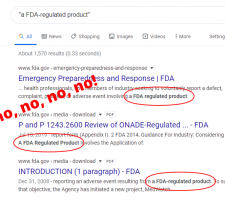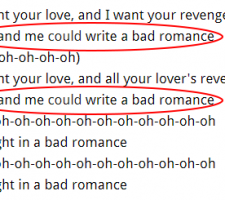The world is facing unprecedented uncertainty in the time of coronavirus, but that doesn’t excuse us from the requirements of proper grammar.
Let’s start with the basics: what do we call this darn virus? There have been so many names bandied about in the press that it can be hard to make sense of them all. Here is the breakdown:
Coronavirus
This is a general term for all coronaviruses. The current coronavirus is just one of many coronaviruses floating around out there in the world, including but not limited to the common cold. Some are more harmful to us than others.
Although many people are still using “coronavirus” to refer to this specific outbreak of a specific virus, that is technically incorrect. But we’ll let it slide, for now, since “coronavirus” rolls off the tongue more easily than the alternatives below, and we have to give the masses some small comforts in these trying times. Plus, the wordplay with the unfortunately named Corona beer is just fun.
However, because “coronavirus” is a general term and not a proper noun, it should never be capitalized—unless it’s at the beginning of a sentence, of course. It’s “coronavirus,” not “Coronavirus.”
It’s also never two words, so please steer clear of “corona virus” or “Corona virus” or “Corona Virus.”
2019-nCoV
Because coronavirus is a general term describing a class of viruses, we needed a name for this specific strain. Enter 2019-nCoV. The World Health Organization (WHO) began using this temporary name to refer to the current virus to distinguish it from all the other, less scary coronaviruses out there.
- 2019 = the year we saw the first confirmed cases
- n = novel (meaning new; it’s the first time this particular coronavirus has been detected in humans)
- Co = corona
- V = virus
SARS-CoV-2
But wait, there’s more! WHO doesn’t actually get to name the viruses, which is why they only gave it a temporary name. The official naming honor goes to the International Committee on Taxonomy of Viruses (ICTV). And the final, permanent name they have designated for this particular virus is SARS-CoV-2. (If you want all the sleep-inducing background on virus nomenclature and how ICTV landed on this name, you can read about it here.)
However many people, including WHO, are reluctant to use the SARS-CoV-2 name because of its association with the earlier, even scarier, SARS (Severe Acute Respiratory Syndrome) virus of 2003. No one wants to spread any more panic than already exists out there, which is why you may still see SARS-CoV-2 referred to in the media as 2019-nCoV or generically as “coronavirus” or “novel coronavirus” or even “the virus responsible for COVID-19.”
Which brings us to…
COVID-19
While WHO doesn’t get to name the virus, they DO get to name the disease caused by the virus. And following their own guidelines for Naming New Human Infectious Diseases, they have come up with COVID-19.
- CO = corona
- VI = virus
- D = disease
- 19 = the year it was first detected
But why do we need two names (SARS-CoV-2 and COVID-19)? We can compare this to HIV/AIDS. HIV is the virus, and AIDS is the disease caused by HIV. Just like COVID-19 is the disease caused by SARS-CoV-2.
Another example is measles. Did you know that measles is the name of the disease, but the virus that causes measles is called rubeola?
COVID-19 Grammar (affect vs. effect)
Now let’s get to the grammar. Aside from making sure we are using the right name, I’ve seen far too many people talk about how the coronavirus is “effecting” us. It’s “affect,” people. Affect is the verb. Effect is a noun. (Most of the time. We’ll get to the other uses in a future post.)
For now what you most need to know as it pertains to current events is that the coronavirus pandemic is affecting our daily lives, but it’s having an effect on daily life.
Résumé tips
Speaking of the effect on daily life, for those who are suddenly finding yourselves wrenched out of work, please practice self-care and try to stay positive. And in the meantime, since you’ll need to dust off your resume, here are a few tips for making yourself as attractive as possible to your future employer in writing.
- Most importantly, proofread your resume and cover letter!
- Pay attention to spelling, punctuation, capitalization, and grammar.
- After you have proofread, have someone else read it. Then read it again. There is no such thing as reading it too many times to catch typos and errors. (But you might want to put it away overnight and come back to it with a fresh eye in the morning.)
- Be consistent.
- If you use bulleted lists for your accomplishments, make sure they are grammatically parallel and have consistent punctuation.
- If you are going to omit punctuation for things like abbreviations (e.g., in addresses), be consistent about it throughout the document. No mixing and matching.
- Keep your language simple and natural.
- Avoid jargon-speak. Overstuffing your resume with too much lingo can come across as pretentious and insincere.
- Avoid inflated words and clichés. Words like “team player” and “results-driven” don’t make you stand out; these have no substance and are a crutch for people who don’t know what else to say about themselves.
- Instead, SHOW how you drive results, embrace teamwork, add value, or think outside the box by using action words and supporting data. Be specific in your accomplishments.
If you have any other resume tips to help those who will be unexpectedly seeking employment in the coming weeks and months, please leave them in the comments below.
Above all, stay safe out there, friends. And know that you can count on Sloppy Bullets to bring much-needed grammar commentary even in the throes of a global pandemic. We’ll just keep sanitizing the keyboard and courageously carry on.
(Please subscribe to the Sloppy Bullets blog to receive notifications of new posts!)



